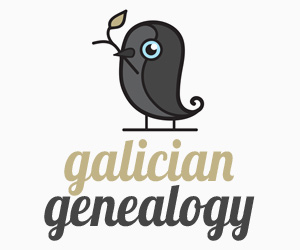
KADOBNA
The village in Kalush raion, Ivano-Frankivsk Oblast, Ukraine
- Aleksander Czolowski (1865-1944) – Polish ethnographer, archivist and director of the Historical Museum in Lviv. While collecting information for the publication of the history of Kalush town and area, he sent out questionnaires to each place from this region. The answers received concern the local population. We believe that this is valuable information that enriches knowledge about our ancestors.
KADOBNA
THE 1892 QUESTIONNAIRE
1. Where is the location of the village? (detailed description in every respect)
Kadobna village is inhabited by 1027 people (172 house numbers). The village is located to the west of the town of Kalusz (Kalush) and to the north of Holyn, where there is a railway station and post office. On both sides of the village there are 217 morga (morga = about 1.4 acres) of pastures, and almost the entire village is surrounded by forests and meadows. A stream flows through the middle of the village.
2. What is the history of place name and foundation ?
The historical message is that several dozen people from the Stanislawow area [Ivano-Frankivsk today] settled here. They escaped the Tatars invasion.
3. Description of the Church and its monuments. When it was founded, built and consecrated, where it is located ?
The wooden church is located in the middle of the village. The roof of the church is covered with sheet metal. The church and the cemetery are surrounded by a fence. The wooden belfry is located in the western part of this square . On the ground floor of the belfry, in a locked room, the archive of the community is stored. The church was built and consecrated in 1848.
4. From what year Vital Records and Church Acts begin ?
The Church Acts begin with 1836, written in Old Church Slavonic language, then in Latin since Galicia was taken over by Austria.
5. Are there graves, trenches, caverns, older commemorative crosses and statues with mysterious names ? Do they have any legends?
There aren’t
6. Do you have any information about historical events, such as Tatar attacks, battles, robberies, thugs and so on ?
See point 2.
7. Have ancient artifacts been dug here? For example, stone tools, coins, elements of ancient weapons and so on?
No
8. What are the physiological traits of the local population ?
Hair color Dark
Facial complexion ”Healthy”
Growth “Adequate”
Physique “Quite strong”
Endurance at work Low
Temperament Choleric
Healthiness Average the health, despite the favorable forest environment
Morality It’s thanks to the present parish priest – Rev. Konstantyn Czepiel, that the residents of Kadoba and Kropiwnik don’t drink vodka or rum. Only a few people are an exception in both villages. Thus, the morality in these villages is relatively better compared to other places.
9. What is the dress (everyday and festive, summer and winter.) What are its parts? How are they called ? cut, color, decorations
Men’s clothing is a long shirt, embroidered on the collar and shoulders. They also wear „sirak”. In winter, they wear a sheepskin coat, which is embroidered on the sides and along the buttons.
[ Sirak, Sierak, Siermaga – peasant coat, named from the gray colors, also popular in brown color ]
The women’s outfit is ordinary. On holidays, they put on thin „rantuch” (headscarf) on their heads. They fall on their backs and are long up to their ankles. In winter, they wear sheepskin coats covered with black cloth.
10. Is there foreign origin in the types of clothing of the local population?
No
11. Are there any specific customs, typically local, in the population?
A special kind of faith in fortune-tellers and quacks, who are generously paid by the inhabitants during their illness. Belief in „bells” to protect against hailstorms has been preserved. In the summer, when any cloud appears in the sky, they ring the bells out loud. Two people work as bell ringers and they charge “garniec” (the pot) of grain (3.8 liters – approx. US dry gallon) from each farm and a small cash payment.
12. What are the local trade items and where are they sold to?
The inhabitants breed cattle, which they then sell at the market in Kalusz (Kalush) and Rozniatow (Rozhnyativ) in Dolina County. They are also involved in beekeeping. The beekeeping economy has not developed, so they do not have much benefit from it.
13. What is the main source of income?
Working in the state forests and transporting trees.
14. How many people were deceased and newborn in the village in 1892?
Newborn – 57, Deceased – 40
Additional informations:
The school was built in 1857. 127 children are obliged to attend the school, but 131 are currently studying. Some of them still attend school after the end of school age, so there is such a difference in numbers. In the state forest called „Na Klubokiem”, half a mile from the village, there was a saltworks, which was later closed.
- SOURCES
- Archiwum Aleksandra Czołowskiego
- The National Library of Poland - Atlas geologiczny Galicyi. Z25
